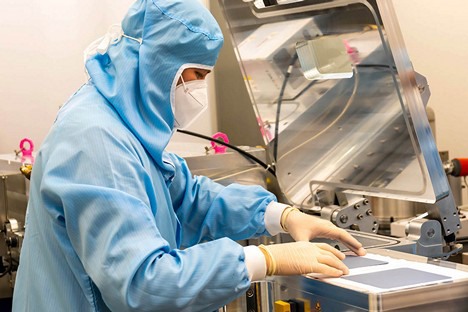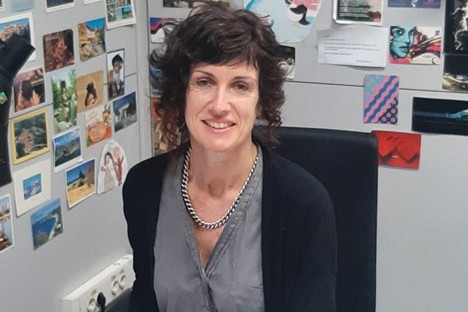How many times have we wondered if the time will ever come when we can grow crops in a greenhouse with a roof that is also capable of generating electricity? Science is making enormous leaps forward, and the solution finally seems very close.
 Laboratory for photovoltaic cells - Enea
Laboratory for photovoltaic cells - Enea
Italy's Enea is working to develop innovative systems that combine the use of sunlight for photovoltaic cells and photosynthesis. "The roof should be able to transmit the solar radiation needed for plant growth while generating electricity. Photovoltaic roofing is being tested for greenhouses on a laboratory scale, but also on a large-scale approach, namely, with thin semi-transparent spectral-selective structures (areas up to 100 cm2) and semi-transparent photovoltaic modules designed by Enea."
A groundbreaking revolution? It would be the perfect combination, with a system that generates electrical power and makes it also possible to grow vegetables or fruits. After all, we are talking about the opportunity to cover thousands of acres of greenhouses currently covered with plastic using photovoltaic structures instead of having to use other agricultural lands to do so. In this way, the grower would gain great benefits in the form of subsidies in accordance with the guidelines for ecological and energy transition. But the grower would also gain profits from electricity sales and save on irrigation costs. At the same time, vast areas, especially in Sicily, currently used for cultivation under plastic, would change color. This is a groundbreaking revolution.
Operating on multiple fronts "Our goal is to improve the performance of solar cells and study possible ways for their application that promote the penetration of photovoltaic technology in horticulture and in the electricity system," said Paola Delli Veneri, in charge of the Laboratory for Innovative Instruments at Enea. "We are confident in our ability to soon overcome the "psychological" barrier of 30% efficiency for perovskite/silicon tandem solar cells, one of the most promising solutions for the new generation of photovoltaic cells."
 Paola Delli Veneri
Paola Delli Veneri
The "Fit for 55" EU climate change package foresees Italy reaching 64 GW of installed photovoltaic capacity by 2030, compared to 25 GW in 2022, and generating an annual amount of electricity equal to 88 TWh, compared to 27.5 TWh in 2022.
"Converting the sun's energy into electricity through photovoltaic technology is one of the most concrete options for decarbonizing the energy system. It contributes to controlling the average global temperature increase as well as combating climate change," added Delli Veneri. "However, it is equally crucial to support the Italian sector, in part by supporting the creation of new production chains, as indicated in the national energy plan."
Everything starts from the desire to define innovative materials and processes for the production of sustainable, reliable, and efficient photovoltaic modules, which can be integrated in different contexts. It involves some studies conducted within the framework of the 'Research for a high-efficiency photovoltaic project,' carried out by Enea in collaboration with the Cnr, RSE, and several universities. In this context, Enea has developed solar cells with the perovskite/silicon tandem technology with a 28% higher efficiency in the conversion of solar irradiance into electrical power in its research centers of Portici (Naples) and Casaccia (Rome) in collaboration with the Tor Vergata University of Rome.
For more information:
Paola Delli Veneri
ENEA - Portici (Napoli)
paola.delliveneri@enea.it
